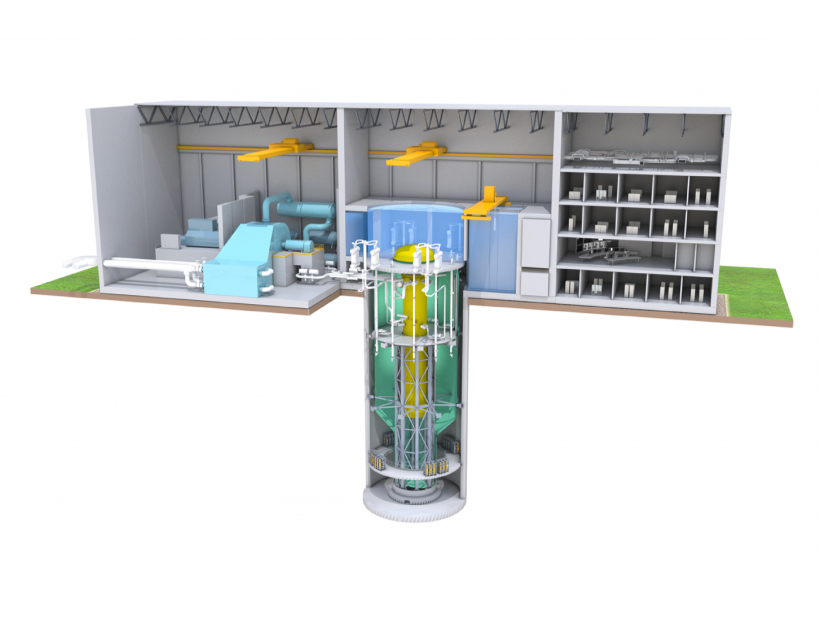
The Nuclear Innovation Alliance (NIA), a D.C.-based nonprofit think tank, is advocating a makeover of the U.S. Department of Energy to expand its research-and-development mission to include assisting developers in commercializing advanced reactors.
On Thursday the group released a 37-page report, “Transforming the U.S. Department of Energy: Paving the Way to Commercialize Advanced Nuclear Energy,” arguing that the future of nuclear energy are small modular reactors (SMRs) but that they will not be rapidly deployed without a federal push.
SMRs are factory-made, installed on-site and designed with fail-safe cooling systems. They are typically 100 to 300 MW, a fraction of the power output of the nation’s existing fleet of aging commercial reactors, most of which generate at least 1,000 MW.
New reactor designs must be approved by the Nuclear Regulatory Commission, which has approved only one so far, by Oregon-based NuScale Power. The company’s modules are rated at 50 MW each in a design configuration that could hold as many as 12, for a total capacity of 600 MW. NuScale has an agreement with Utah Associated Municipal Power Systems to build an SMR later this decade on the grounds of the Idaho National Laboratory.
NIA’s report argues that SMRs can be a vital part of the nation’s efforts to decarbonize U.S. power generation and are small enough and safe enough to be installed at the sites that once were occupied by coal-burning power plants.
In a webinar following the release of the report, Executive Director Judi Greenwald elaborated: “Our hope is that the recommendations in this report will better position DOE as a catalyst with a public-private partnership needed to reach full-scale commercialization.
“This is the moment to have this conversation. Over the past couple of years, especially the Energy Act of 2020, the Infrastructure Investment and Jobs Act [of 2021] and the Inflation Reduction Act [of 2022], Congress has provided substantial new direction and funding. Now it’s time for DOE, Congress and stakeholders to focus on effective implementation of these transformative policies through DOE transformation,” Greenwald said.
The report reasons that DOE “will need to coordinate across many segments of the industry” in order to quickly allow “deployment at an immense scale” and “at least double the domestic nuclear energy capacity that is online today.”
It argues that the department should develop an agency-wide plan and include advanced nuclear energy in its Energy Earthshots Initiative.
“This strategic plan would involve establishing an advanced nuclear energy Earthshot that integrates capabilities across DOE; leveraging recent legislation and DOE’s current and future advisory committees; assessing the viable pathways to solve climate stability and energy security issues; and developing a comprehensive national strategy for exporting advanced nuclear energy technology,” the report explains.
The plan would also require a new role for DOE as a critical partner working with private SMR developers, a significant expansion of the department’s long-time role, especially through its National Laboratories, as a pure research-and-development partner.
Finally, the report advocates that the White House appoint a senior director for civil nuclear energy to assist DOE in its new role, and that Congress increase the department’s funding for its expanded responsibilities.
Kathryn Huff, assistant secretary for DOE’s Office Nuclear Energy, said she appreciated NIA’s input.
“I think the work that you all put into this report is apparent in the nuance of some of the specific examples of what we could be doing to accelerate our transformation in DOE,” she said during the webinar. “And I think it really reflects a lot of understanding of where we are as DOE and where we should be and where we could be.”


